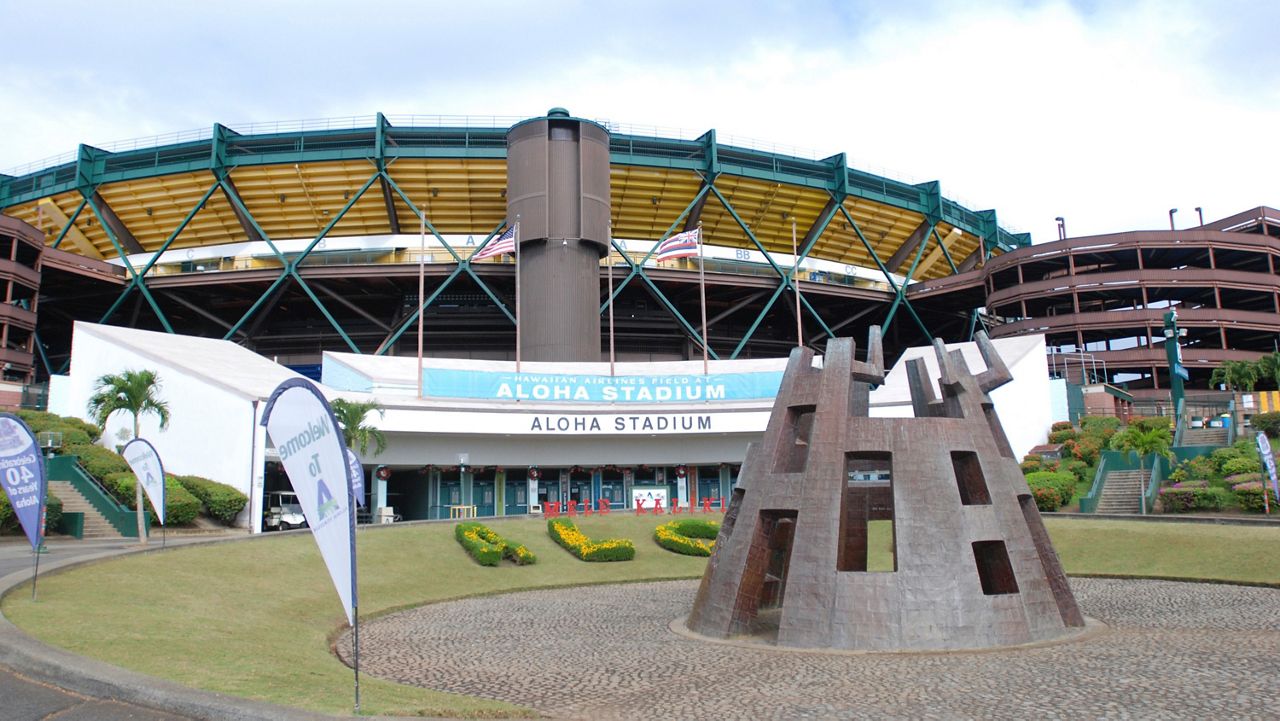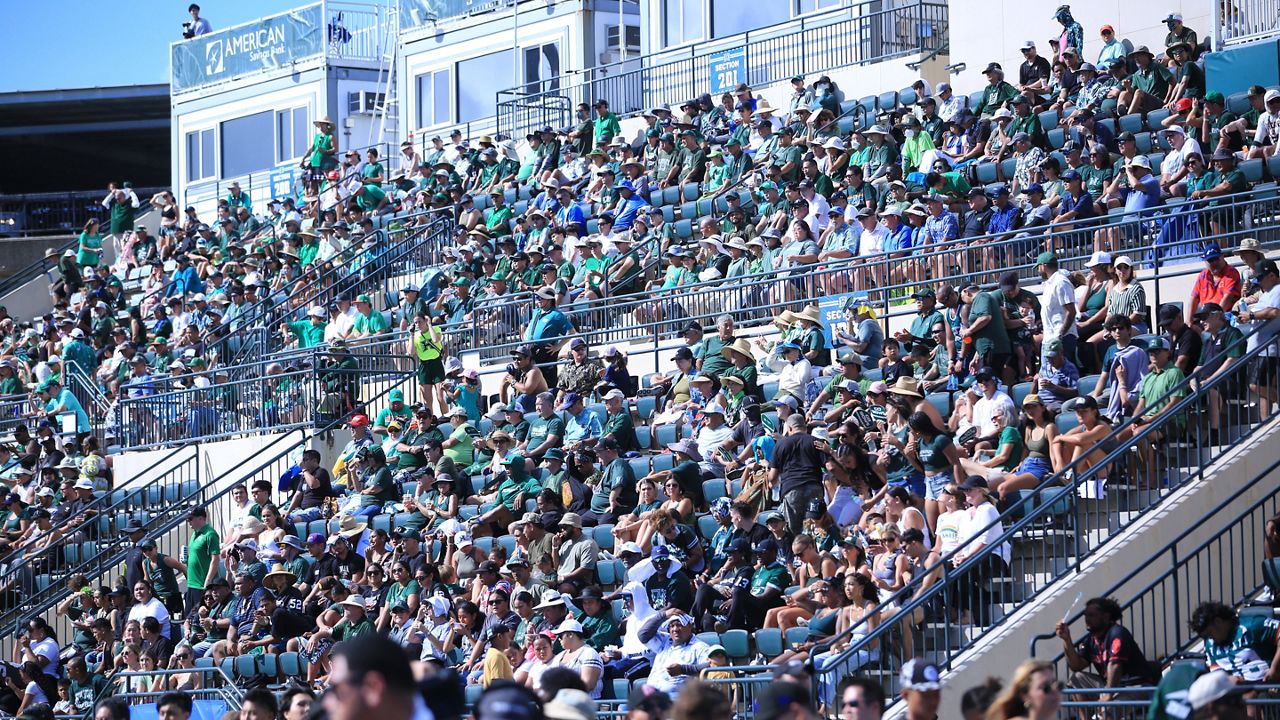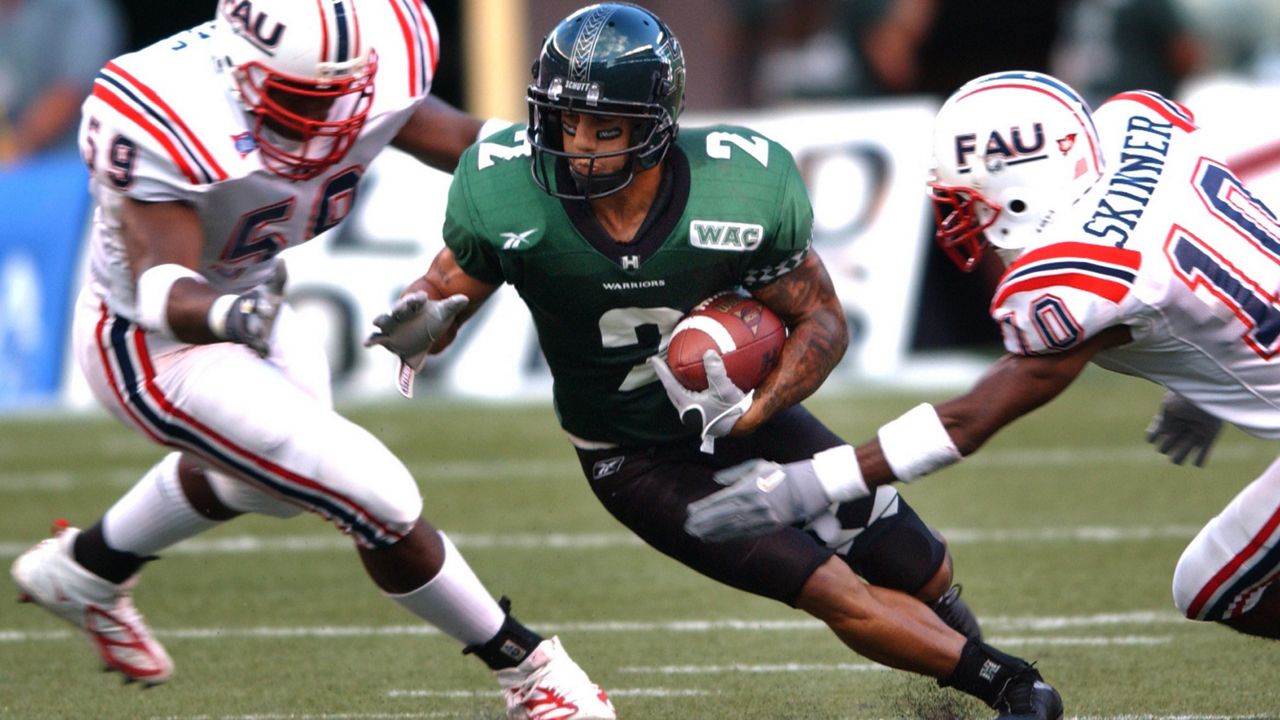HONOLULU — Whether the outcome of Election Day ends up in favor of Democratic candidate Josh Green or Republican candidate Duke Aiona, the next governor of the state of Hawaii has pledged to move quickly on extracting Oahu’s mired stadium project from the mud.
With the New Aloha Stadium Entertainment District’s fate at an impasse for the last seven weeks as outgoing Gov. David Ige and the Stadium Authority engaged in a staring contest over its direction — a design/build by a state entity like the University of Hawaii, as Ige suggested suddenly in late September, or the originally envisioned public-private partnership bidding process that most stadium board members still favor — Green and Aiona have said they understand the urgency of the situation.
However, the two have different ideas on its execution.
It has been estimated that for each month of delay, $2 million is wasted due to ever-increasing construction costs. The most recent projections, before the standoff of the last couple months, had the stadium pegged for completion in 2027.
“Time is the most precious commodity we have here, both for housing and a stadium that will sustain our (UH) athletic program,” Green, Ige's lieutenant governor, told Hawaii Public Radio in late September. He was careful to say he had no intention of undermining Ige while he served out the rest of his term.
Said Aiona, the former lieutenant governor under Linda Lingle, to HPR in a separate interview that were he to take office, “It will be definitive, it will be now (to act on the stadium). It won’t be in a month or two months. We’ve actually spoken to a lot of people on this; we have enough information. Obviously, all the stakeholders will be involved in whatever decision is being made, and we move forward.”
In the waning weeks of his tenure, Ige demonstrated the sway the state’s top elected official can have on the direction of a proposed large public works project like NASED. He surprised more than a few people with his sudden interest in taking it in a new direction and scrapping the mixed-use P3 bidding — or at least delaying it. The governor has the power to sign off on or veto the project’s funding, and Ige made it clear he would not sign off on a private bidding process.
State Sen. Glenn Wakai, who is up for re-election in the Halawa district that includes existing Aloha Stadium and is one of the biggest proponents of NASED, said the $400 million the Legislature pledged to the project — $350 million for demolition of the existing structure and construction of a new venue, plus $50 million for operations — will remain regardless of the new makeup of the Capitol chambers.
Wakai has spoken to Green, whom he expects to win Tuesday, multiple times about the stadium.
“That money is safe and secure,” Wakai told Spectrum News on Monday. “What I don’t want to see happening is us going in front of the Legislature again to ask for more in the future. So, I’ve made it clear to Josh and DAGS (the Department of Accounting and General Services) as well as the Stadium Authority, that’s it.
“We’re going to need more for the mixed-use and housing component of it in the future, but for the stadium itself, that’s our all-in, is $350 (million).”
Green is in favor of mixed-use development with housing development getting underway simultaneously with a stadium.
“Housing will have to be part of whatever we do in and around the stadium,” Green told HPR, calling it his “first, second and third” priority statewide. He said 2,000 to 3,000 units can fit in the 98-acre footprint with an emphasis toward transit-oriented development with rail.
Aiona said the entire Halawa location could be put toward housing and favors building an on-campus stadium in Manoa. UH is in its second season of playing its home games at the makeshift, 9,300-seat Clarence T.C. Ching Athletics Complex.
He said Aloha Stadium was not properly made use of as a venue.
“We also saw the maintenance of it, how difficult it was to maintain it. We also saw the capacity of it, really wasn’t up to standards that the University of Hawaii football team is designed for.
“I think a 20,000 to 25,000 seat stadium on campus would be more than adequate. I think it would be perfect for the football that they play. More importantly, it would give that college atmosphere that you need for any program at the college level. We just don’t have that right now at the stadium.”
UH was noncommital on Ige's suggestion that it take leadership of the new stadium's development and construction in Halawa and is proceeding with its own $30 million plans to upgrade the Ching Complex to about 17,000 seats.
Wakai said he will urge the new governor to make it a top priority, within days of taking office, to distribute the Request for Proposals process to three teams of private bidders that have been on standby. The RFPs languished for 18 months on Ige’s desk, he said.
“From what I understand, the three finalists are willing to get a (RFP) response back within six months,” Wakai said. “So, we can get this thing going, and hopefully start vetting the three proposals by June or so of next year, and maybe awarding a contract shortly thereafter and start tearing down the current stadium shortly thereafter as well.”
Brian McInnis covers the state’s sports scene for Spectrum News Hawaii.








